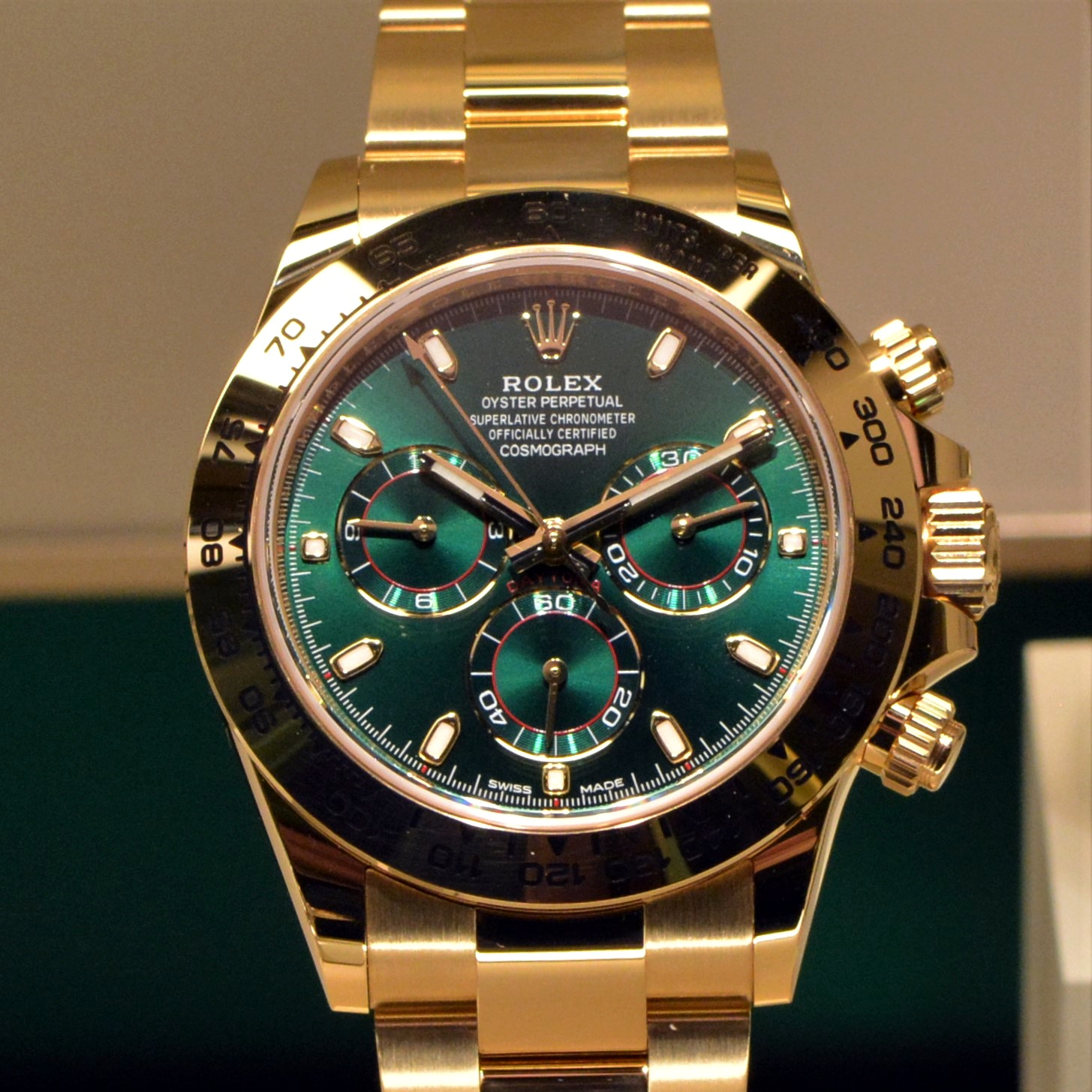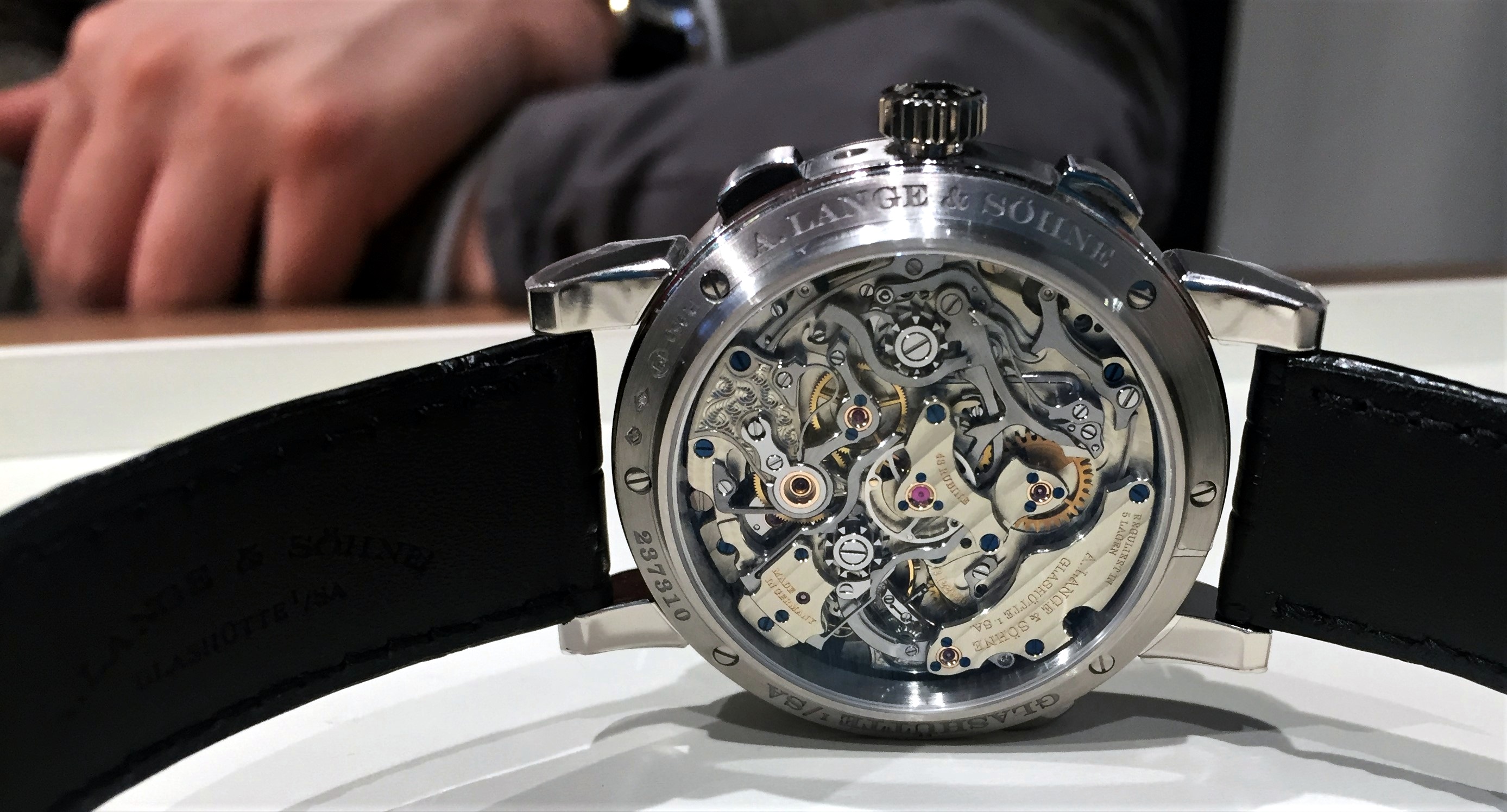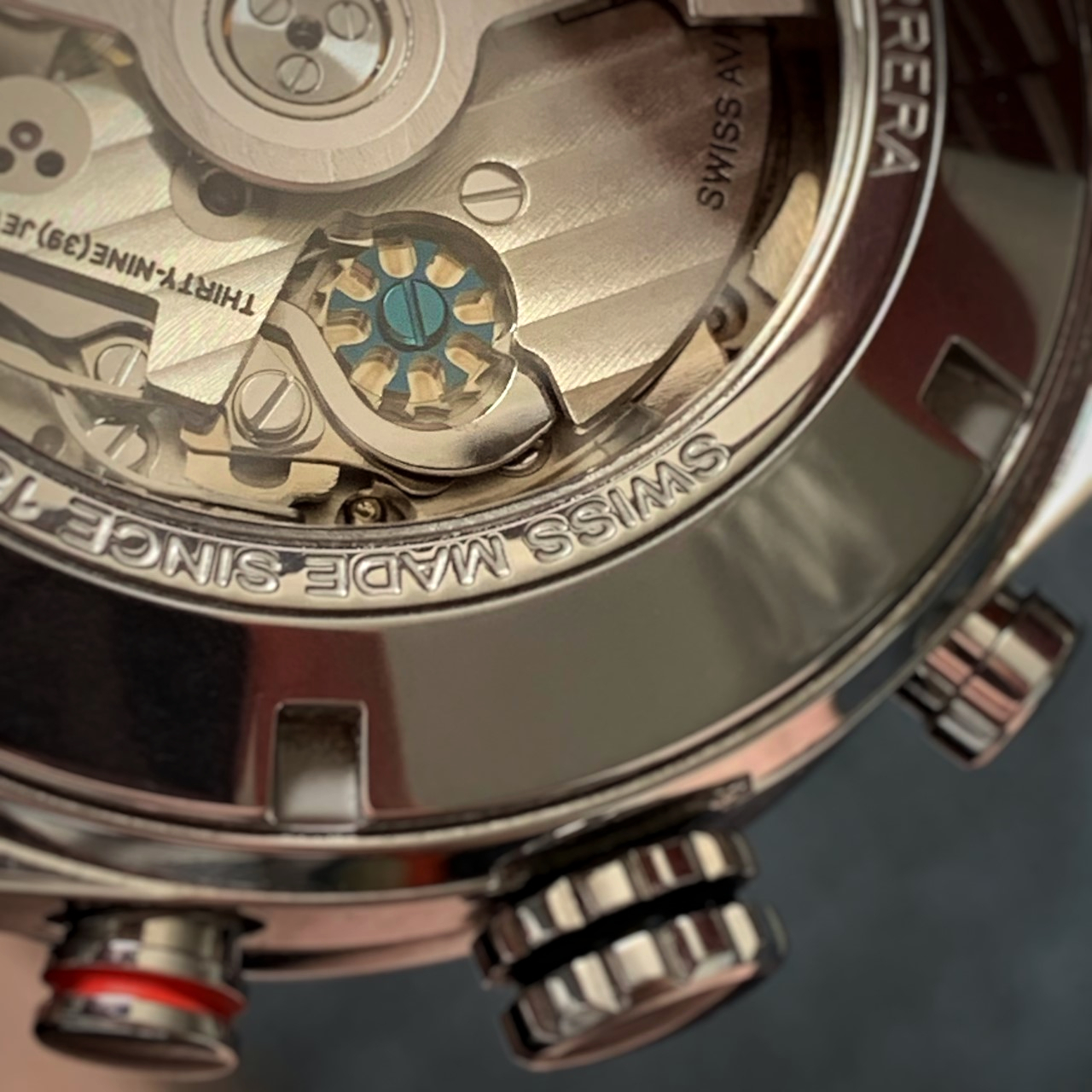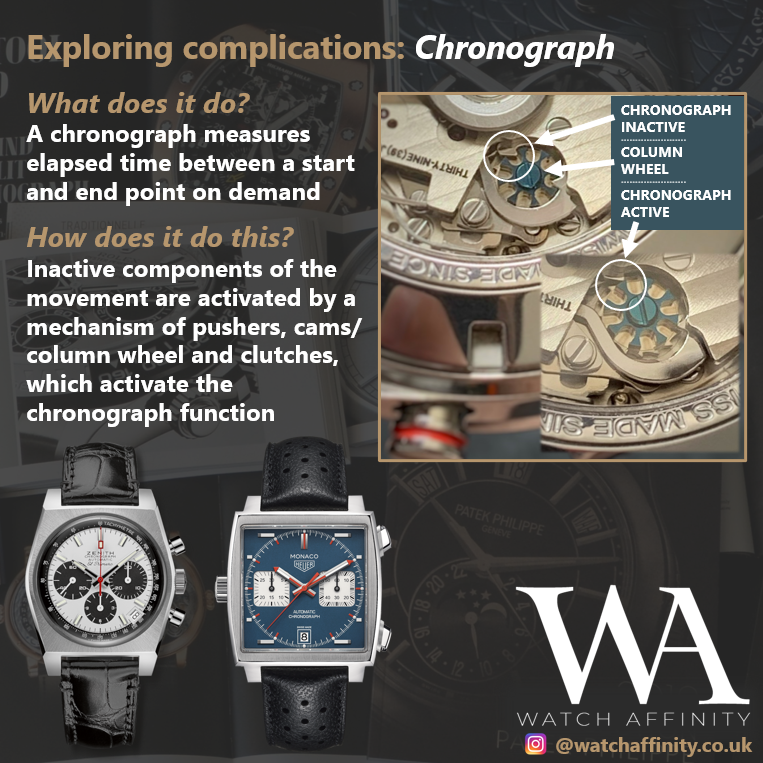In our earlier “It’s complicated” series, we looked at three high-end complications: the tourbillon, the perpetual calendar, and the minute repeater. Each of these is of course an extremely intricate complication, requiring the utmost skill on the part of the watchmaker to assemble. However, there is another equally challenging complication, which is far more commonplace, and so we thought it only right to give the “It’s Complicated” treatment to that as well, so in this article we will focus on the chronograph watch complication.
Owing to the ready availability of chronograph pieces on the market, especially relative to tourbillon and minute repeater timepieces, you would be forgiven for thinking that the chronograph watch complication is one which is not as sophisticated as these other high-end complications. However the chronograph is just as challenging a complication to create.
What is a chronograph?
‘Chronograph’ is the horological term for what is also commonly referred to as a stopwatch – something which is capable of measuring time from any given starting point counting onwards from there. On a wristwatch, today this commonly takes the form of a separate sweeping seconds hand, and 2 sub-dials indicating elapsed minutes and hours, which are activated by a start/stop pusher at 2 o’clock, and a reset pusher at 4 o’clock.

Rolex Cosmograph Daytona 116508-0013
The history of the chronograph is a rich one with entire books dedicated to it. It would be tremendously difficult to do this history justice in this article, and so we will briefly run through some of the highlights.
The name ‘chronograph’ comes from the Greek words ‘Chronos’ (the personification of time) and ‘graph’ (meaning to write), translating nominally as ‘time-writer’. The first chronograph was invented in 1816 by watchmaker and astronomer Louis Moinet, who created the pocket-watch chronograph to help with his astronomical works. This was able to measure time to an accuracy of 1/60th of a second, something that in this era had never been achieved. This chronograph was designed for the specific purpose of measuring time, and as such the only functions it held were to operate as a chronograph, with no ‘current time’ indications such as hour or minute hands, or even a second pusher as we see today.
The first time the reset feature was added was in 1844 by Swiss watchmaker Adolphe Nicole, which allowed successive measurements to be taken. This opened the potential for the chronograph to be used in new and different ways, including military operations, navigation and sporting events for recording lap and race times.
In 1913, Longines became one of the earliest watchmakers to include a chronograph in a wristwatch, for the first time incorporating their monopusher calibre 13.33Z. Other manufacturers soon followed suit, with Breitling, Universal Geneve, and Heuer all releasing chronographs in the same decade. As the technology developed, chronographs became prominent during the Twentieth Century seeing the launches of some of the most iconic chronographs we know today, including the likes of the Breitling Navitimer, Rolex Cosmograph Daytona, Heuer Carrera and Omega Speedmaster.
However, it was not until 1969 when the first automatic chronograph calibres emerged.
In itself, the question of who created the world’s first automatic chronograph is still a debated topic even more than 50 years later – Zenith’s famed El Primero was announced in January 1969, just prior to Seiko’s 6139 in May 1969, or the infamous Heuer Calibre 11 (a combined venture by Heuer, Breitling, Buren and Dubois-Depraz) in August 1969, perhaps best known for driving the original Heuer Monaco, a favourite of the legendary Steve McQueen.
Over the course of time, there have been many evolutions on original chronograph complication including better accuracy, complexity, and even in their operation and use, including:
– tachymetre scales were added in the early Twentieth Century, allowing an instant average speed reading over a certain distance – if a chronograph is started and stopped at the beginning and end of 1 unit of distance (mile, kilometre etc), the number on the scale that the second hand points to indicates the average speed travelled (furthermore the first rotating tachymetre bezels were introduced in 1958 by Heuer)
– the first rattrapante, or split-seconds chronograph, was created by Patek Philippe in 1922, which starts two separate second hands together when pressing the start pusher. Pressing a third pusher will stop only one of those hands to ‘split the seconds’ – when this third pusher is pressed again, the stopped hand instantly catches up to the moving second hand which has continued in the meantime – indeed the name rattrapante comes from the French word ‘rattraper’, meaning ‘to catch up’
– the flyback chronograph was introduced by Longines in 1936, allowing the user to both stop and reset the chronograph with the push of a single button – a two press start/stop-reset sequence as opposed to a three press start/stop/reset sequence
– TAG Heuer’s 2011 Mikrotimer was accurate to 1/1000th a second
– the first triple-split rattrapante was created by A Lange & Söhne in 2018 which allowed the splitting of not only seconds, but hours and minutes too, up to an incredible 12 hours of elapsed time
Today, the chronograph is often incorporated into grand complication timepieces as a demonstration of skill and dexterity. With Zenith, the El Primero chronograph is accompanied by Zero-G and tourbillon complications; Patek Philippe include both chronographs and rattrapante chronographs within their Complications and Grand Complications, and – famous for their exquisite casebacks – A Lange & Söhne include it within their perpetual calendar rattrapanate timepieces.

A Lange & Söhne 421.025 caseback
When you can see the movement required for a complication such as this, you can start to fully appreciate the complexity inherent in chronographs and their subsequent evolutions such as the flyback and rattrapante chronographs.
So how does a chronograph watch complication work?
Between the pushers and the hands on the dial is of course a control mechanism built into the calibre, which serves to translate the presses on the pushers into what you see happening on the display. There are different types of control mechanism for a chronograph. The simplest of which is the use of cams to activate and manage the chronograph function, although the more coveted component is the column wheel. The column wheel is a component which improves the accuracy and precision of the chronograph function, as well as increasing the reliability of it.

Column wheel component visible in blued steel
The chronograph is an ‘on-demand’ complication, alongside the minute repeater, meaning that it does not work all the time in the way that a tourbillon or calendar complication does. All the while the complication is not active, neither are its component parts; in the chronograph these are only activated when the complication is activated by the pushers.
When the pushers are pressed, the column wheel or cam is rotated, and a clutch engages the active area of the calibre with the chronograph components to start the chronograph function. There are two types of clutches which can be employed to engage the chronograph components: a horizontal clutch or vertical clutch. As the names might suggest, the horizontal clutch moves two gears/wheels horizontally together, and a vertical clutch will move two gears or wheels together that are otherwise lifted apart on the same axis.

Of course, this explanation is a much simplified version, however hopefully it serves to illustrate a little about how the chronograph watch complication works and highlight the complexity that goes into what is a far more commonplace complication than other high-end functions, but no less sophisticated.
Next time you handle a chronograph timepiece, be sure to take a moment to admire the craft of the calibre through the sapphire caseback (if it has one) – the best way to fully appreciate the mechanical nature of this complication is to see it in action!
We really hope that you have found this informative and helpful – please get in touch and let us know what you think via our Contact page, or via our Instagram!
You might also be interested in:
- What drives the relationship between watches and cars?
- Spotlight: TAG Heuer Carrera
- Spotlight: Zenith Chronomaster El Primero Revival Shadow
- Watch Stationery and Gift Ideas
- Watch Books, Watch Boxes and more at the Watch Affinity Shop on Amazon (commissions earned)
As an Amazon Associate, I earn from qualifying purchases – thank you for your support

